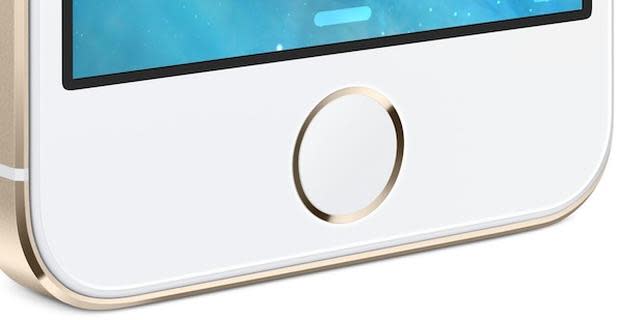Synaptics: Get ready for more smartphones with fingerprint readers

Fingerprint readers like the one found in the Galaxy S5 will be more prevalent next year, according to Synaptics. CNET
For Synaptics, the business of making fingerprint readers a part of smartphones is still in its infancy.
Last year, Apple drummed up attention for the benefits of unlocking a smartphone with the simple press of a finger when it introduced a fingerprint reader on the iPhone 5S. In February, Samsung unveiled its Galaxy S5, complete with its own fingerprint reader.
Since then, though, there's been little buzz about the feature. But Synaptics CEO Rick Bergman believes that will change. He said a lot of smartphones will debut next year with fingerprint readers, calling out the next Mobile World Congress trade show as a coming out moment for fingerprint sensors.
"Samsung is our largest customer, but you'll see a lot of other manufacturers with fingerprint reading capabilities," Bergman said in an interview. As costs come down, more high-end and midtier smartphones will get their own readers, he added.
Bergman would know; Synaptics makes fingerprint sensors for various electronic gadgets. It supplies the sensor found in the Galaxy S5 and the HTC One Max, though it doesn't build the iPhone 5S's fingerprint reader. Apple uses its own reader, built by a company called Authentec, which it acquired in 2012.
Biometrics represents one of Synaptics largest growth opportunities. The company posted a 43 percent increase in its fiscal fourth-quarter revenue thanks in part to the better-than-expected performance of its biometric business. Bergman sees that business eventually taking off because of three main benefits: convenience in unlocking phones, security and a method of confirming a transaction.
Bergman, however, admits that fingerprint readers could be better, and he said customers had shown some frustration with them. While his company's study shows that it's quicker to unlock a phone with a finger tap than a typed-in a pass-code, there's less tolerance for errors when it comes to fingerprint sensors.
Synaptics is working on improving the readers, initially by reducing the split-second delay between pressing the sensor and the phone's response.
"It needs to be like the on/off button," he said. "We need to make it faster, and today, it's not the case."

The iPhone 5S features a fingerprint reader using technology acquired by Apple. Apple
That kind of instantaneous reaction will come with fingerprint readers in 2015, he said.
To Bergman, the holy grail of fingerprint sensors is to embed the reader under the display, eliminating the button altogether. Instead, a person could touch the display, which would read the fingerprint to verify the identity.
But there are challenges to such a feature. Because the detail of a fingerprint is so fine, much of it gets lost or blurred by the glass display. He said the technology is still a couple of years away.
"We're working diligently on a solution for that," he said.
Another opportunity that Bergman sees is with the Internet of Things, or the concept that virtually every object will be connected online and be able to communicate with others. Having a smart refrigerator or even smart thermometer may require new and different interfaces, which is where Synaptics comes in.
"That's basically Synaptics' business," he said. "What makes these devices easier to use is sensors and making them intuitive."
Alongside fingerprint sensors, Synaptics has long built touchpads found on laptops. Much of its work still involves mobile devices and laptops, but Bergman said he sees more opportunities in other areas, including automotive.
Beyond touchpads, Synaptics is working on gesture controls and eye-tracking technology. Though previous Samsung Galaxy S phones have tinkered with eye controls, Bergman said Synaptics is working on next-generation, more-refined eye tracking.
He envisioned the technology detecting driver fatigue and helping drivers with accident avoidance in other ways as well.
Eye-tracking is "a little disconcerting," he said, "but once you get used to it, it actually becomes useful."
Also from CNET:


